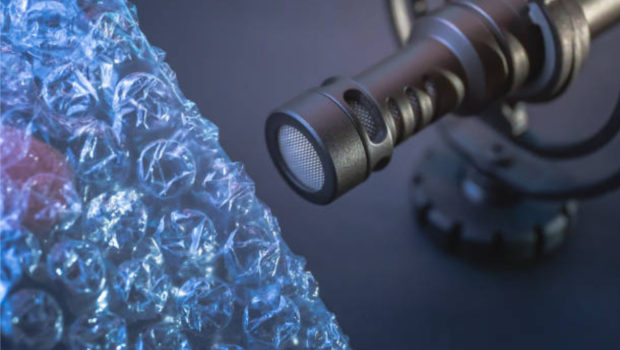Science Behind ASMR: A Research Based View
Autonomous sensory meridian response or ASMR is a term people use to describe tingling sensations. Commonly, the feeling itself starts from the top of the head and spreads down as warming, relaxing feeling to the rest of the body. These sensations are produced in response to certain triggers such as sounds of tapping, scratching, whispering, soft speaking, brushing, etc.
Does everyone experience ASMR?
It is quite an interesting phenomenon as some people are able to experience it while others are not. However, those who do experience it feel considerably relaxed after listening to it. It’s noteworthy that ASMR has also been linked with reduced levels of anxiety and stress. ASMR has also helped people that have trouble sleeping and has majorly helped them in falling asleep faster and better. It is definitely something to kick back and relax with, in our jam-packed lives.
Popularity of ASMR
ASMR has been gaining popularity on YouTube and Reddit for the past couple of years. Its content is growing and continues to grow as a vast majority of people benefit from it. Not only that creators also use special kinds of ASMR microphones that produce high-quality, realistic ASMR sounds to enhance the experience. It’s quite strange not everyone can experience ASMR.
Research Based Proof

In order to resolve this long-standing dilemma, researchers have published studies to help them understand the science behind it.
In the first study ever done on ASMR, researchers wanted to find the biggest triggers of ASMR experience and also explore how it could be used to ease symptoms of depression and chronic pain.
They found that the biggest triggers were whispering, personal attention, and crisp sounds like the wrapping of metallic foil and long fingernails. However, the sound of someone’s laughter and the noise of a vacuum proved to be the worst triggers of the ones being examined. On top of that, 80 percent of participants said their mood was improved due to ASMR.
A significant reduction in chronic pain levels was also observed in people who experience ASMR. While this study fell a little short of being statistically significant, there might be a link between synaesthesia and ASMR.
Synaesthesia occurs when two or more senses are attached to one another. The stimulation of one sensory pathway leads to an automatic experience with a second one. So, someone could involuntarily link words with taste. Since synaesthesia and ASMR both involve the senses, the idea that they are related makes a lot of sense.
A researcher at the University of Sheffield, department of psychology did thorough research on this topic and published a paper as well which helped understand the physiological reasoning behind it. There were two research studies, one was a huge online survey with over a thousand people. Participants were asked to watch ASMR videos and some non-related ASMR videos and how they felt after watching those videos.
People who were able to experience ASMR reported feelings of relaxation and calmness after watching them. Contrarily, those who weren’t able to experience ASMR didn’t report much. The second study was to look at the physiological basis of ASMR. There were over 112 participants, half of which experienced ASMR and the other half didn’t. Participants were taken to a lab and were wired up with some physiological equipment and were asked to watch ASMR videos and non-ASMR videos.
It was observed that people who do experience ASMR showed a significant reduction in their heart rate and the other half didn’t show the same reduction. It physiologically proved and explained the relationship between ASMR and reduced stress levels. This study ensures that ASMR is a genuine experience for those people who are able to experience it.
Effect of ASMR on Good Hormones
A professor at Shenandoah University in Winchester, who is also the founder of ASMR University online, stated that ASMR works through the activation of biological pathways that stimulate the release of happy hormones like oxytocin, serotonin, dopamine, and endorphins. Dopamine and oxytocin stimulate the production of Endorphins, thus reducing stress and anxiety levels.
It was also mentioned that ASMR triggers also play a huge role in the production of these relaxing “tingles”. Close personal attention, eye contact, and slow methodological hand movements could also create this response. Endorphins are hormones released by the body to cope with pain. They reduce pain and stimulate relaxation, comfort, and sedation. No wonder people use ASMR to fall asleep.
Dopamine helps recognize and focus on those things that can trigger endorphins. Oxytocin also plays a similar role in stimulating endorphin levels as well as increasing sensitivity to it. So, all these hormones help with de-stressing and relaxation.
Another research that incorporated fMRI-based methodology was used to examine the brain activation and hormone production of subjects that were prescreened for ASMR effects as they watched ASMR videos as well as described specific moments of relaxation and tingling. It was observed that those subjects that were able to experience ASMR showed a considerable increase in regions linked with both reward and emotional arousal.
Brain activation during ASMR also indicated similarities to patterns observed previously in musical frisson as well as affiliative behaviors. The conclusion drawn from this study stated that ASMR is definitely linked with reduced stress levels and also revealed the mechanistic underpinnings of this sensation.
ASMR might be new to some, but those who are able to experience it, listen to it for hours. ASMR can be quite addictive and has helped a vast majority of people. Hopefully, through more research and experiments on it in the future, even more, people can benefit from it and understand this phenomenon even better.















